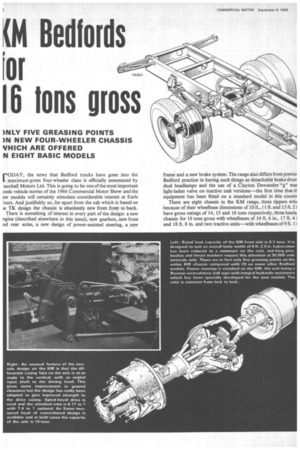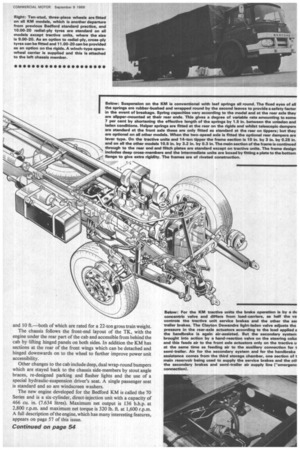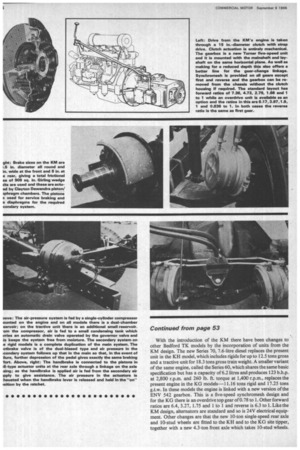(14 Bedfords rn• 16 tons gross
Page 54

Page 55

Page 56

If you've noticed an error in this article please click here to report it so we can fix it.
)NLV FIVE GREASING POINTS )111 NEW FOUR-WHEELER CHASSIS VHICH ARE OFFERED N EIGHT BASIC MODELS
EODAY, the news that Bedford trucks have gone into the maximum-gross four-wheeler class is officially announced by auxhall Motors Ltd. This is going to be one of the most important Dods vehicle stories of the 1966 Commercial Motor Show and the ew models will certainly stimulate considerable interest at Earls 'ourt. And justifiably so, for apart from the cab which is based on TK design the chassis is absolutely new from front to back. There is something of interest in every part of the design: a new ngine (described elsewhere in this issue), new gearbox, new front nd rear axles, a new design of power-assisted steering, a new frame and a new brake system. The range also differs from previo. Bedford practice in having such things as detachable brake drun dual headlamps and the use of a Clayton Dewandre "g" mai light-laden valve on tractive unit versions—the first time that tlequipment has been fitted on a standard model in this countr
There are eight chassis in the KM range, three tippers whii because of their wheelbase dimensions of 10 ft., 11 ft. and 13 ft. 21 have gross ratings of 14, 15 and 16 tons respectively, three haula chassis for 16 tons gross with wheelbases of 14 ft. 6 in., 17 ft. 4 i and 18 ft. 8 in. and two tractive units—with wheelbases of 9 ft. 1 i and 10 ft.—both of which are rated for a 22-ton gross train weight.
The chassis follows the front-end layout of the TK, with the engine under the rear part of the cab and accessible from behind the cab by lifting hinged panels on both sides. In addition the KM has sections at the rear of the front wings which can be detached and hinged downwards on to the wheel to further improve power unit accessibility.
Other changes to the cab include deep, dual wrap-round bumpers which are stayed back to the chassis side-members by stout angle braces, re-designed parking and flasher lights and the use of a special hydraulic-suspension driver's seat. A single passenger seat is standard and so are windscreen washers.
The new engine developed for the Bedford KM is called the 70 Series and is a six-cylinder, direct-injection unit with a capacity of 466 cu. in. (7.634 litres). Maximum net output is 136 b.h.p. at 2,800 r.p.m. and maximum net torque is 320 lb. ft. at 1,600 r.p.m. A full description of the engine, which has many interesting features, appears on page 57 of this issue. With the introduction of the KM there have been changes to other Redford TK models by the incorporation of units from the KM design. The new Series 70, 7.6-litre diesel replaces the present unit in the KH model, which includes rigids for up to 12.5 tons gross and a tractive unit for 18.3 tons gross train weight. A smaller variant of the same engine, called the Series 60, which shares the, same basic specification but has a capacity of 6.2 litres and produces 123 b.h.p. at 2,800 r.p.m. and 260 lb. ft. torque at 1,400 r.p.m., replaces the present engine in the KG models-11.16 tons rigid and 17.25 tons g.t.w. In these models the engine is linked with a new version of the ENV 542 gearbox. This is a five-speed synchromesh design and for the KG there is an overdrive top gear of 0.78 to 1. Other forward ratios are 6.4, 3.27, 1.75 and 1 to 1 and reverse is 6.3 to 1. Like the KM design, alternators are standard and so is 24V electrical equipment. Other changes are that the new 10-ton single-speed rear axle and 10-stud wheels are fitted to the KH and to the KG site tipper, together with a new 4.3-ton front axle which takes 10-stud wheels.
































































































































